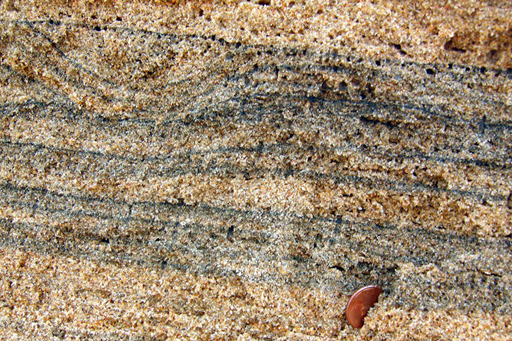4.6 Rare earth elements
Dredging isn’t the only cause for concern when it comes to extracting minerals from the Earth. Cast your minds back to the mobile phone in Week 2. Do you recall the term ‘rare earth elements’ (REE)? They are a group of elements that aren’t that rare in the Earth’s crust, but there are not many places where they occur in concentrations great enough to exploit economically and they are difficult to separate from each other.
REE are not found as native metals like copper and gold, but bound up in minerals. Often they are found in low concentrations in some common minerals, but in higher concentrations they can form their own minerals. The most economically viable being the interestingly named bastnäsite, monazite and xenotime. These minerals contain many other elements in addition to the REE, many of them toxic, such as arsenic, and radioactive, such as thorium.
REE are found in igneous, metamorphic and sedimentary rocks and you will look briefly at each, as their origin determines the way that they are mined and the environmental impact.
In igneous rocks, REE are most abundant in the veins and pegmatites (igneous rocks made of large crystals, seen in Week 1) around magmatic intrusions, especially in areas where continental crust is being pulled apart, a modern example being the East African Rift Valley. Here, we find rocks with unusual chemistries, rich in alkali elements such as sodium, potassium and calcium, and even carbonate igneous rocks called carbonatites, where instead of being dominated by silica they are over 50% carbonate. A modern carbonatite volcano is Ol Doinyo Lengai in Tanzania.
There are also REE not associated with alkali igneous rocks and carbonatites, they are often associated with iron and the REE are extracted as by-products of the iron industry.
The above examples are called primary deposits because the REE are mined from the location that they were originally emplaced. Secondary deposits are where an economically viable mineral has been transported and redeposited, and is mined from there. The most common source of REE deposits are placer deposits, over 350 of which have been identified worldwide. Placer deposits are where minerals that are denser than the surrounding grains (normally quartz) are concentrated by winnowing, by wind or water. These deposits are either mined using diggers or, if the deposit is underwater, they are dredged like aggregates.
Another secondary deposit is bauxite, the ore of aluminium, that you looked at in Week 2. If the parent rock was rich in REE, the bauxite is too. In fact, just like the aluminium, the weathering process concentrates the REE from perhaps 0.1–0.2% REE to up to 40%, as is found in the Mount Weld deposit, Australia.
The final and still unexploited sources are deep sea muds. Two areas of the Pacific Ocean are reported to contain high concentrations of REE, which is thought to come from mid-ocean ridge hydrothermal activity.
Almost all REE are actually a by-product of mining for other materials. Only Mountain Pass, California (which is currently not in production) is mined solely for REE.


